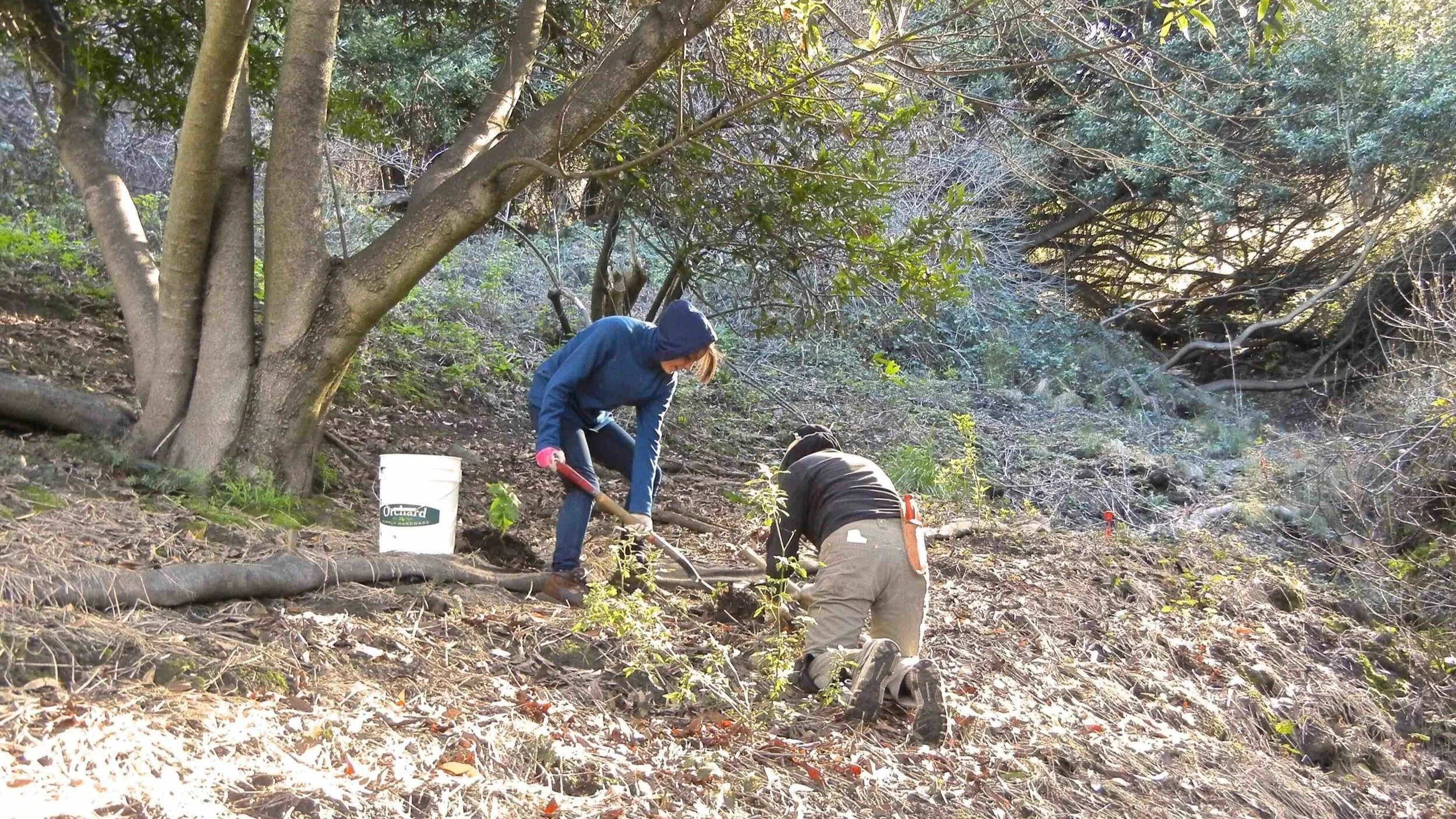Summer has arrived and we are seeing many butterflies fluttering in the Canyon, native plants in bloom, and many people hiking the trails!
May Happenings 2024
Claremont Canyon Regional Preserve—Eucalyptus Removal is Underway by Marilyn Goldhaber
Outing with the Park District trails managers
Conservancy members recently hosted a tour of Claremont Canyon with planners from the East Bay Regional Park District's Trails Development team, including trails manager Sean Dougan and Ward 2 Board Member Dee Rosario. We hiked up the Conservancy's new Gwin Canyon trail connecting Park District and UC lands, then headed over to the Stonewall-Panoramic Ridge Trail to assess its steepest section just below Panoramic Way. We are hoping the Park District will build switchbacks on this degraded section of trail for increased safety and accessibility to hikers. We'll keep you informed as progress develops.
The legacy of Ralph Samuel
Saturday, May 18, 2002 was the dedication of the Ralph Samuel bench at the Claremont Canyon Regional Preserve. Ralph was the District’s Land Acquisition Specialist from 1979 to 1986. Hulet Hornbeck, Land Department Chief, originally hired him to acquire the privately owned lots that were included in the Claremont Canyon Preserve.
Big Cats in Claremont Canyon, by Janis Bankoff
A new study conducted by the East Bay Regional Park District reveals the presence of mountain lions (“Big Cats”), an elusive apex predator utilizing the wilderness ridegtop above the Caldecott Tunnel to transit between the open spaces north and south of the tunnel. The study, expanded earlier this year to include the Caldecott Tunnel Corridor, is led by veteran Park District wildlife ecologist and science consultant Steve Bobzie
Annual Meeting Speaker Robert Doyle, General Manager of the East Bay Regional Park District
Robert Doyle, General Manager East Bay Regional Park District
General Manager Robert Doyle began his park career over 40 years ago as a member of the East Bay Regional Park District’s eucalyptus crews, following the big freeze of 1972. He went on to serve in several eld, planning, and administrative positions before becoming Assistant General Manager for Land Acquisition and Planning in 1990. For the next 21 years he led the District’s expansion of parklands to serve the rapidly growing populations of Alameda and Contra Costa counties. In 2010, he was appointed General Manager by the Park District’s seven-member, elected Board of Directors to oversee 70 regional parks totaling 124,000 acres, 1,200 miles of interconnecting trails, and a staff of 1,000 employees.
Building trails in Claremont Canyon, by Jon Kaufman
Through its stewardship program, the Claremont Canyon Conservancy has been building and maintaining fire trails in upper Claremont Canyon. Working with the landowners, in this case the University of California, our volunteers have improved the fire trail from Signpost 29 to Four Corners and named it the Summit House Trail (after the old inn that once stood at the top of the canyon).
Volunteers improve the experience of Claremont Canyon, by Jon Kaufman
Park District Board accepts $4.65 m FEMA grant, press release from EBRPD
Broom removal in the preserve with Ranger Jeff McKenna, by Marilyn Goldhaber
Another great stewardship day in the Claremont Canyon Regional Preserve. Although only four hardy souls showed up on this beautiful Saturday morning, we got right to work, splitting up into two locations to rid the lower canyon of French broom. We were fortunate to have Ranger Jeff McKenna, who brought along some large and small weed wrenches and a lot of muscle power. We feel that the lower Preserve is pretty much cleared of mature broom and only young seedlings are appearing--in smaller and smaller numbers each year.


